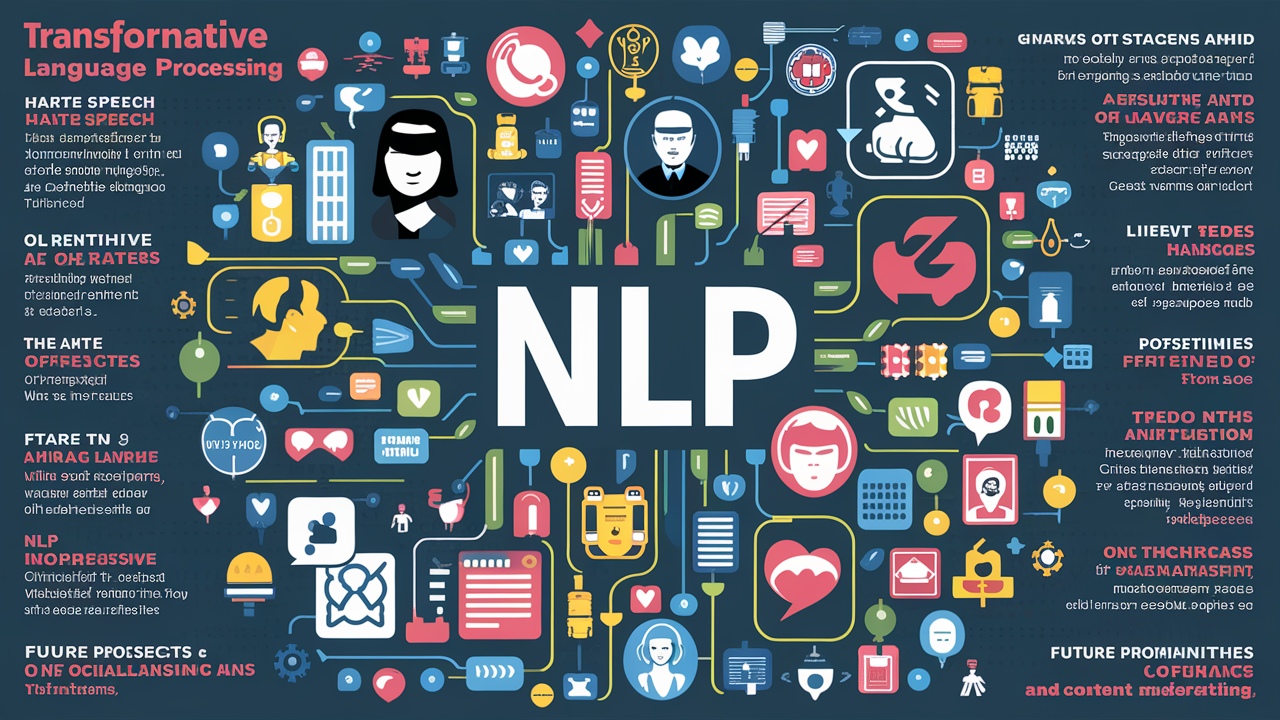Introduction
Social media platforms have become integral to communication in the digital age. With billions of users engaging daily, these platforms host a wide variety of content. While this connectivity brings opportunities for interaction and sharing, it also opens the door to harmful content that can spread misinformation, hate speech, cyberbullying, and more. In response, businesses and platforms are increasingly turning to Natural Language Processing (NLP) to safeguard their spaces and ensure a safer environment for their users.
In this article, we explore how NLP is revolutionizing content moderation and protecting online communities from harmful content, helping social media platforms manage, monitor, and filter user-generated content in real time.
The Role of NLP in Content Moderation
Natural Language Processing, a subfield of artificial intelligence (AI), focuses on the interaction between computers and human languages. NLP algorithms analyze text, understand its meaning, and even make decisions based on that understanding. When applied to content moderation, NLP plays a pivotal role in identifying and filtering harmful content, such as hate speech, offensive language, and spam, which can have severe consequences if left unchecked.
How NLP Works in Content Moderation
- Text Classification and Sentiment Analysis
NLP uses text classification to categorize content into various categories (e.g., harmful, safe, spam). Additionally, sentiment analysis detects the emotional tone of the content, helping to identify negative emotions such as anger or hatred, which could indicate harmful content. - Detecting Offensive Language and Hate Speech
NLP tools utilize pre-trained models to identify offensive language and hate speech. These models analyze words, phrases, and even context to detect potentially harmful messages. With advancements in NLP, algorithms now understand subtleties such as sarcasm or irony, making them more accurate in identifying harmful content that was once challenging to detect. - Real-Time Content Moderation
One of the key advantages of NLP is the ability to process vast amounts of content in real time. Social media platforms are flooded with new posts, comments, and messages every second, making manual moderation impractical. NLP systems can automatically flag and remove harmful content or alert moderators to take action, minimizing the risk of harmful material spreading. - Multilingual Moderation
With users from across the globe, social media platforms must handle content in various languages. NLP’s ability to understand multiple languages and dialects allows platforms to implement moderation strategies across diverse linguistic communities, ensuring global safety.
The Benefits of NLP in Content Moderation
- Efficiency and Scalability
NLP systems can analyze millions of posts in seconds, something human moderators simply cannot do. This speed and scalability are essential in a world where harmful content spreads quickly. - Enhanced Accuracy
With advanced machine learning models, NLP algorithms continue to improve, offering more precise results in detecting harmful content. This ensures that platforms can focus on genuine issues while minimizing false positives. - Reduction in Human Bias
Traditional content moderation often involves human moderators, who may unintentionally bring their own biases into decision-making. NLP systems, when properly trained, can help minimize human bias, creating more consistent and fair moderation.
Challenges of Using NLP in Content Moderation
While NLP offers many benefits, there are still challenges to overcome:
- Understanding Context: NLP systems are getting better at detecting context, but they may still struggle with nuances, sarcasm, or cultural references. For instance, the same word or phrase can have different meanings depending on the context.
- Evolving Language: The ever-changing nature of language, with slang, abbreviations, and regional variations, poses a challenge. However, continuous model training allows NLP systems to adapt and improve over time.
- Ethical Concerns: Automated moderation can raise concerns about censorship and free speech. Striking the right balance between moderation and freedom of expression is crucial.
Conclusion
As social media continues to grow, the importance of safeguarding platforms from harmful content becomes even more critical. NLP in content moderation is a vital tool in ensuring the safety and integrity of online communities, offering faster, more accurate, and scalable solutions. While challenges remain, the potential for NLP to create a safer digital environment is immense. By embracing this technology, social media platforms can better protect their users and foster positive, engaging spaces.

